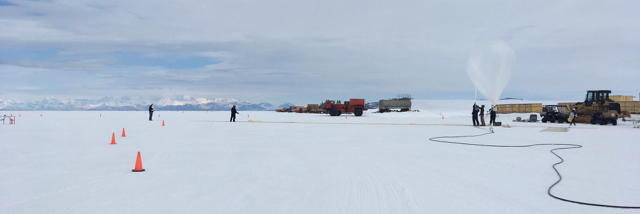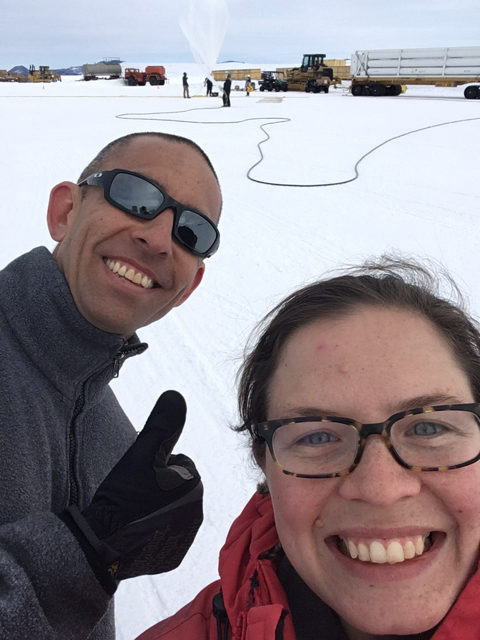HICAL
HICAL 2b launched on December 12 and 2a launched on December 13. I saw the first launch. They're small (<12 lbs) payloads, and so can be released by hand.In the picture, Stephen's holding the payload on the far left. For the one I saw, the rigger who released the balloon ran with the payload and did a little jump in the air to get it started, and then it gracefully floated up into space.

The HICALs contain small mechanical pulsers that transmit calibration pulses to ANITA. We launched both of them as ANITA was passing by LDB again, so that they would be reasonably close to ANITA. Pulses from HICAl will reflect off the ice and up to the ANITA payload as well as propagate directly from HICAL to ANITA. We can compare the direct and reflected events to better understandthe how much transmitted power gets reflected off the ice. This helps us understand cosmic ray events in ANITA.
Cosmic rays produce radio-frequency radiation in the atmosphere that bounces off the ice and propagates up to ANITA. Unlike the HICAL events, we only receive the reflected events. So we use the HICAl data to estimate how much power is lost in the reflection and then use that to calculate the initial energy of the cosmic ray -- which can be quite substantial!
